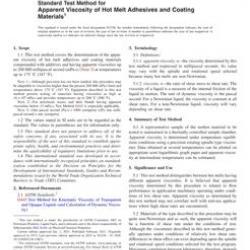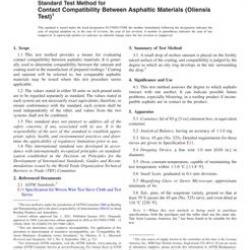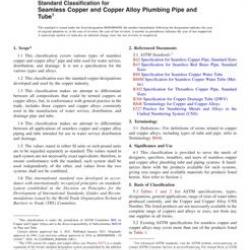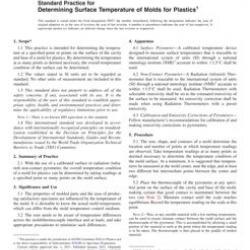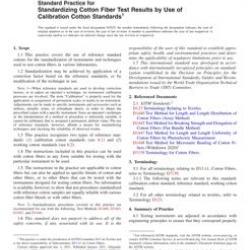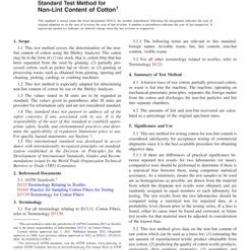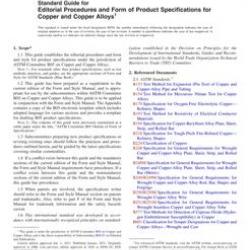No products
ASTM D4829-21
ASTM D4829-21 Standard Test Method for Expansion Index of Soils
standard by ASTM International, 01/01/2021
Full Description
1.1''This test method allows for determination of expansion potential of soils when inundated with distilled water.2 This test method measures a qualitative index property of the soil rather than a design parameter to be used for calculation of the actual amount of expansion. The expansion index, EI, provides an indication of swelling potential of a soil.
1.2''This test method provides a simple, yet sensitive, method for evaluation of expansion potential of soils for practical engineering applications using an index parameter.
1.3''Units'''The values stated in SI units are to be regarded as standard. The values given in parentheses are provided for information only and are not considered standard. Reporting of test results in units other than SI shall not be regarded as nonconformance with this standard.
1.3.1''The gravitational system of inch-pound units is used when dealing with inch-pound units. In the system, the pound (lbf) represents a unit of force (weight), while the units for mass is slugs. The slug unit is not given, unless dynamic (F = ma) calculations are involved.
1.3.2''The SI units presented for apparatus are substitutions of the inch-pound units, other similar SI units should be acceptable providing they meet the technical requirements established by the inch-pound apparatus.
1.3.3''It is common practice in the engineering/construction profession to concurrently use pounds to represent both a unit of mass (lbm) and of force (lbf). This practice implicitly combines two separate systems of units; the absolute and the gravitational systems. It is scientifically undesirable to combine the use of two separate sets of inch-pound units within a single standard. As stated, this standard includes the gravitational system of inch-pound units and does not use/present the slug unit of mass. However, the use of balances and scales recording pounds of mass (lbm) or recording density in lbm/ft shall not be regarded as nonconformance with this standard.
1.3.4''The terms density and unit weight are often used interchangeably. Density is mass per unit volume, whereas unit weight is force per unit volume. In this standard, density is given only in SI units. After the density has been determined, the unit weight is calculated in SI or inch-pound units, or both.
1.4''All observed and calculated values shall conform to the guidelines for significant digits and rounding established in Practice D6026, unless superseded by this test method.
1.4.1''For purposes of comparing a measured or calculated value(s) with specified limits, the measured or calculated value(s) shall be rounded to the nearest decimal of significant digits in the specified limit.
1.4.2''The procedures used to specify how data are collected/recorded or calculated in the standard are regarded as the industry standard. In addition, they are representative of the significant digits that generally should be retained. The procedures used do not consider material variation, purpose for obtaining the data, special purpose studies, or any considerations for the user'''s objectives; and it is common practice to increase or reduce significant digits of reported data to be commensurate with these considerations. It is beyond the scope of this standard to consider significant digits used in analysis methods for engineering data.
1.5''The text of this standard references notes and footnotes that provide explanatory material. These notes and footnotes (excluding those in tables and figures) shall not be considered as requirements of the standard.
1.6''This standard does not purport to address all of the safety concerns, if any, associated with its use. It is the responsibility of the user of this standard to establish appropriate safety, health, and environmental practices and determine the applicability of regulatory limitations prior to use.
1.7''This international standard was developed in accordance with internationally recognized principles on standardization established in the Decision on Principles for the Development of International Standards, Guides and Recommendations issued by the World Trade Organization Technical Barriers to Trade (TBT) Committee.






